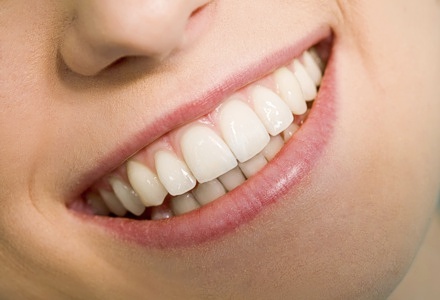Veneers
Veneers are thin masks of porcelain or tooth coloured filling material that can be stuck to the outer surface of a tooth to change its shape, colour or position. They are usually attached to anterior teeth.
They are used to close gaps, reshape or hide darkened teeth. They can occasionally be fitted with minimal or no removal of tooth tissue, but usually a small amount of tooth tissue needs to be removed from the outer surface and tip of the tooth. They are less destructive than crowns as the back surface of the tooth is left untouched, but do not help strengthen the remaining tooth in the same way as a crown.
Composite Veneers
These can be placed at the chair side by your dentist. The area may not need to be numbed if tooth reduction is not required. The white filling material is attached to the front of your tooth using a very clever glue which has to be applied under controlled conditions. Once the composite filling material has been placed carefully by your dentist they can set it hard with a blue light.
Porcelain Veneers
These are made over two visits. After the tooth is prepared for the veneer your dentist will take moulds of your teeth to be sent to a laboratory where a technician will produce your veneer in a colour of porcelain chosen by you and your dentist. Sometimes temporary veneers are fitted but you need to be careful with them as they are held in place lightly. You do need to keep your teeth very clean in between appointments so that the gums stay in excellent condition.
At the second appointment your dentist will remove any temporary veneers, clean the tooth surface and then attach the veneers with a special glue.

